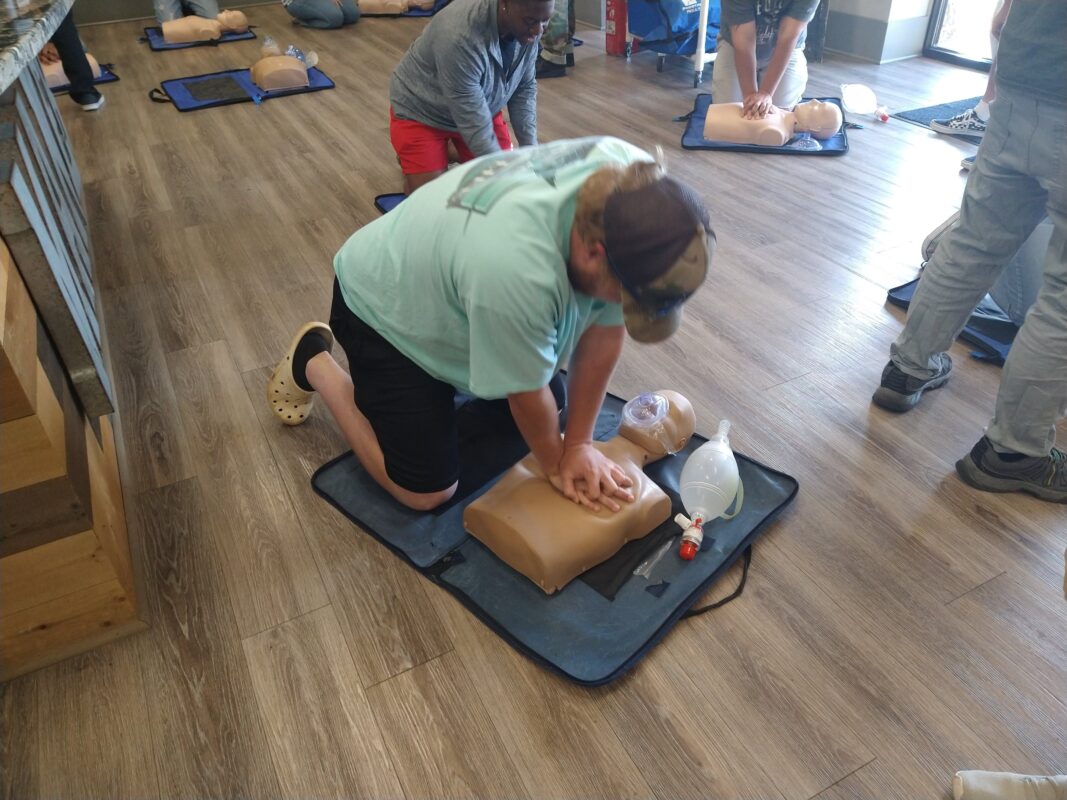Should You Perform CPR Before or After an AED?

Understanding the Relationship Between CPR and AED Before delving into the sequence of CPR and AED administration, it’s essential to grasp the nature of each technique and their respective goals:
CPR (Cardiopulmonary Resuscitation) serves as an emergency response to support failing cardiovascular and respiratory systems. Through chest compressions and rescue breaths, CPR aims to sustain blood circulation and oxygenation until professional medical assistance arrives. In contrast, an AED (Automated External Defibrillator) is a portable device designed to restore normal heart rhythm during sudden cardiac arrest. By analyzing the heart’s rhythm and administering an electrical shock if necessary, an AED aims to restart the heart. Importance of Prompt Action In any cardiac arrest scenario, time is the critical factor. Every moment counts when someone’s heart and lungs cease to function.
The urgency stems from the brain’s vulnerability to oxygen deprivation. Beyond five minutes without blood circulation, the brain begins to suffer irreversible damage. After eight minutes, the likelihood of survival diminishes significantly.
The Importance of Prompt Action
Performing CPR: Step-by-Step Guide
The Role of AED in Cardiac Arrest
Deciding the Order: CPR or AED?
Prioritizing CPR and AED Intervention
Enroll in CPR and AED Courses at Pulse CPR and First Aid School
Understanding CPR and AED Relationship
Prompt action is imperative. According to the American Heart Association (AHA), combining bystander CPR with early defibrillation using an AED can more than double a victim’s chance of survival.
Performing CPR: The Steps While CPR is straightforward in concept, proper execution requires adherence to specific steps:
Preparation: Before initiating CPR, ensure the scene’s safety, assess the victim’s responsiveness, and call emergency services. Execution: CPR involves alternating between chest compressions and rescue breaths in a specific rhythm. Chest Compressions: Begin with firm and rapid chest compressions, maintaining a consistent pace and depth. Rescue Breaths: Follow chest compressions with rescue breaths to supply oxygen to the victim’s lungs. Continuous Action: Continue CPR until professional help arrives or an AED is available. The Role of AED in Cardiac Arrest An AED is a critical tool in addressing sudden cardiac arrest, specifically targeting heart rhythm irregularities.
The device administers an electric shock to halt erratic heart activity, allowing the heart’s natural pacemaker to reset.
Early defibrillation significantly enhances survival chances. AEDs are designed for ease of use, featuring clear audio and visual instructions to guide responders.
Should You Perform CPR Before or After an AED? Determining the sequence of CPR and AED administration depends on various factors, notably the availability of an AED:
Immediate CPR initiation is paramount, especially if the victim is unresponsive and not breathing or gasping. If an AED is accessible, it should be utilized promptly, following CPR initiation. Preparation may take a minute or two, necessitating immediate CPR action. Conclusion In cardiac arrest scenarios, prioritizing CPR and AED interventions follows a clear protocol:
Commence CPR immediately to maintain circulation and oxygenation. If an AED is accessible, integrate it into the response process without delaying CPR. The objective is swift intervention to maximize survival prospects. To equip yourself with the necessary skills for emergency response, enroll in one of our CPR and AED courses at Pulse CPR and First Aid School in Martinez, GA, located at 110 Davis Rd Suite 18. Call 706-901-7277 for enrollment details.
